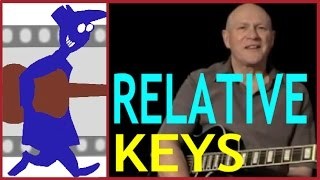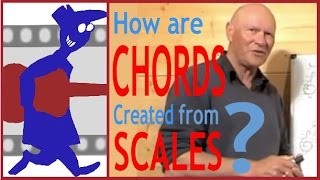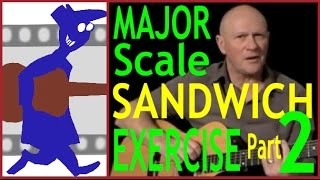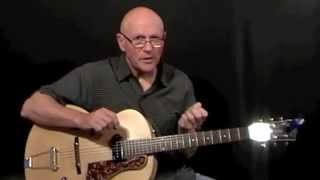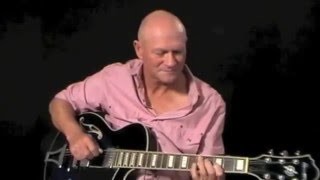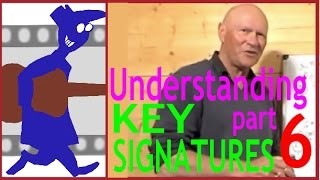How to Use Chords to Write Songs
Published on 26 January 2016
For more information from the source site of this video please visit: http://secretguitarteacher.com/youtube/advanced/theory/bIEkG33fVxE/84380987-how-to-use-chords-to-write-songs.php
This is not for beginners.
But if you have studied a bit of music theory and understand how to produce chords by harmonising the Major Scale and have a basic working understanding of cadences, then you may find this lesson useful and interesting.
Here's the abridged transcript:
The skill of working out chord sequences by ear is a practical necessity for any musician -- especially if you're working in a band where no one is supplying you with written charts or notation of any kind.
Now if you have worked through part two of the Music Theory course, you will have some insight into how chords are built on Major scales. You'll remember how we took the major scale...and created a set of chords based on that scale...and that this set of chords, no matter what key we are in always comes out as Major minor minor Major Major minor diminished Major
This is what is known as a diatonic series of chords -- diatonic means 'using only the notes from within the key'. The diatonic series, together with the use of cadences, provides songwriters with a set of rules that produce safe, predictable results.
We'll start out with a song written by the undisputable greatest songwriter of all time, Bob Dylan. This is the chord sequence to Lily, Rosemary and the Jack of Hearts -- from the 1974 album Blood on the Tracks.
Most popular songs are more easily understood when written out four bars to the line. This is because most verses, choruses and middle sections of songs tend to be 8, 12 or 16 bars long. Here, we are looking at a typical 16-bar ballad.
The opening line makes a musical statement...which is then reinforced by exact repetition...but, you risk losing your audiences' attention if you repeat more than once. So the next line has to contrast this opening statement. Which it does in several ways.
Firstly, it moves the opening chord of the line up to the fourth chord -- the G in this case. We say that the line is centred on the fourth. This is an extremely commonly used device for the contrasting line of a verse -- or section of a song.
The fourth chord is far and away the most popular choice for this task, but the VI chord, is also commonly used in this role, its effect being noticeably softer.
Strong contrast using the G, softer contrast using the Bm
Another thing that contributes to the sense of contrast in the third line is the introduction of the dominant chord of the key -- the fifth -- the A chord in this case. Its dynamic effect is reinforced by using it twice in the line
The final line of the verse then returns to repeat the opening statement with the extra A chord thrown in, really just to give us a sense of completion. Which brings us neatly to the subject of how cadences are used in this sequence.
Highlighted in orange in the first two lines is the plagal cadence the IV -- I .
Definitely helps establish an end of phrase, but also leaves open the sense of continuance.
So that's used to control the flow of the song through those first two lines. Then, in the strongly contrasting line three, we get the authentic cadence,
...here shown in red, paired with the half cadence....here shown in green...
Really the half-cadence used at the end of the line has its sense of tension reinforced by the clever use of the authentic cadence immediately before it...see if you can hear what I mean...
So to summarise, what we have been looking at with this song -- it is a fine example of a song that uses a 16 bar verse with an AABA format. It is also a great example of a song that uses only the primary chords, the I IV V chords.
Now, let's look at another diatonic chord sequence -- we'll choose one of the last songs written by one of the most successful song writing partnerships of all time -- John Lennon and Paul McCartney. Here's the first line of Let It Be.
You can see that, as well as the primary chords, C F and G in this case, we have an Am chord making a brief appearance.
Notice that the first and third bar are the same and that the pairing of chords that make up the plagal cadence is used twice in this line. It's effect made different by where it's placed relative to the bar lines.
So we have the opening musical statement -- quite a strong one really..followed by the Am which softens the effect and then the F which gives us a moderate sense of the line being half completed by setting up a plagal cadence to the start of the third bar where the opening statement is repeated
The final bar of the line -- a plagal cadence in itself, nicely wraps up the line, leaving the ground completely clear to start all over again with the repeat of the whole line.
 3 CRITICAL Guitar Skills
3 CRITICAL Guitar Skills
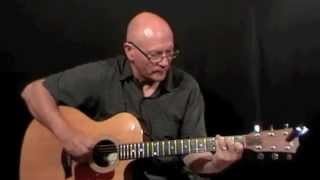 There is only one chord shape on the guitar - Part...
There is only one chord shape on the guitar - Part...
 Mother of All Major Scale Exercises - Part 3 of 4
Mother of All Major Scale Exercises - Part 3 of 4
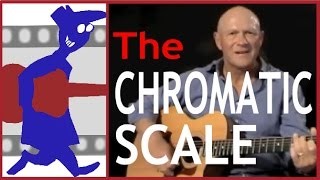 The Chromatic Scale
The Chromatic Scale
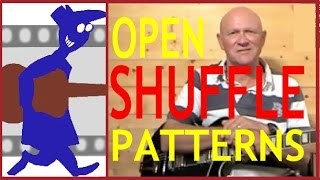 Open Shuffle Patterns in Other Keys
Open Shuffle Patterns in Other Keys
 Andy James - Guitar Tips Alternate Picking - lickl...
Andy James - Guitar Tips Alternate Picking - lickl...
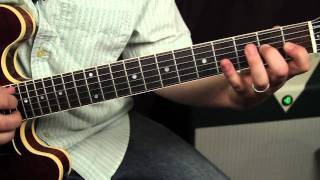 Mastering The Major Scale - Guitar Lesson - Beatle...
Mastering The Major Scale - Guitar Lesson - Beatle...
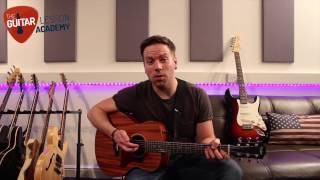 Open Chords Pt 3 - C, A Minor & F - Guitar Lesson...
Open Chords Pt 3 - C, A Minor & F - Guitar Lesson...
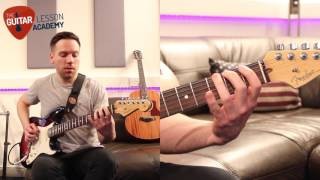 5 Easy Guitar Riffs for beginners - Guitar Lessons...
5 Easy Guitar Riffs for beginners - Guitar Lessons...
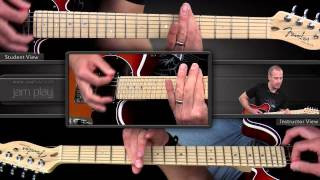 Beginner Guitar Lesson - The A Shape Barre Chord
Beginner Guitar Lesson - The A Shape Barre Chord
